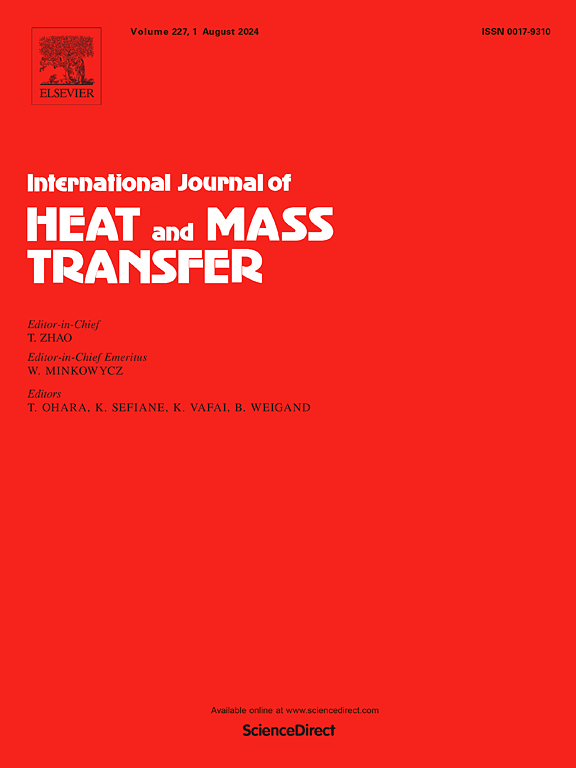Numerical simulation of compressible fluid-dynamics in the chamber of inertial fusion energy systems
IF 5
2区 工程技术
Q1 ENGINEERING, MECHANICAL
International Journal of Heat and Mass Transfer
Pub Date : 2025-01-21
DOI:10.1016/j.ijheatmasstransfer.2025.126700
引用次数: 0
Abstract
This paper aims to establish new and innovative modeling capabilities for analyzing chambers in Inertial Fusion Energy (IFE) systems. IFE is emerging as a promising method to achieve fusion power production, but several challenges must be overcome to develop an IFE pilot plant or deploy commercial IFE systems. These challenges are both theoretical and technical, encompassing a deeper understanding of the underlying physical phenomena and the development of new technologies and materials. One of the needs is to develop mathematical models to describe IFE systems and numerical tools to simulate them. This paper contributes to this endeavor by presenting a new OpenFOAM solver for IFE systems, focusing on gas dynamics in their chambers. The analysis and development of chamber designs will play a significant role in the transition from single-shot experiments to high-repetition rates, as there is a need to protect the chamber walls from the intense radiation fields produced by fusion reactions. A promising design option, normally referred to as thick wall chamber design, consists in using lithium or molten salt jet arrays within the chamber. A critical phenomenon is the venting of high-pressure gases from the center to the external part of the chamber, passing through the blanket array. This process involves the propagation and attenuation of strong pressure waves, requiring suitable modeling approaches for compressible fluid-dynamics. The solver proposed in this work implements a multi-material hydrodynamics model tailored to accurately describe the non-linear propagation of pressure waves while avoiding numerical oscillation issues typical of high-velocity compressible simulation. This solver is verified against numerical test cases, validated against experimental data, and applied to the analysis of the High-Yield Lithium-Injection Fusion-Energy (HYLIFE-I) concept. The relevance of this paper is threefold. Firstly, it contributes to developing and testing modeling approaches for compressible fluid-dynamics phenomena, with specific focus on the new and unexplored topic of IFE thick-liquid-wall blanket modeling. Secondly, it marks one of the first applications of the OpenFOAM library in the research field of IFE systems. Finally, the investigated problem is of practical interest for IFE developers, as it provides useful indications about relevant phenomena in pressure wave propagation in the chamber of these systems.
求助全文
约1分钟内获得全文
求助全文
来源期刊
CiteScore
10.30
自引率
13.50%
发文量
1319
审稿时长
41 days
期刊介绍:
International Journal of Heat and Mass Transfer is the vehicle for the exchange of basic ideas in heat and mass transfer between research workers and engineers throughout the world. It focuses on both analytical and experimental research, with an emphasis on contributions which increase the basic understanding of transfer processes and their application to engineering problems.
Topics include:
-New methods of measuring and/or correlating transport-property data
-Energy engineering
-Environmental applications of heat and/or mass transfer

 求助内容:
求助内容: 应助结果提醒方式:
应助结果提醒方式:


